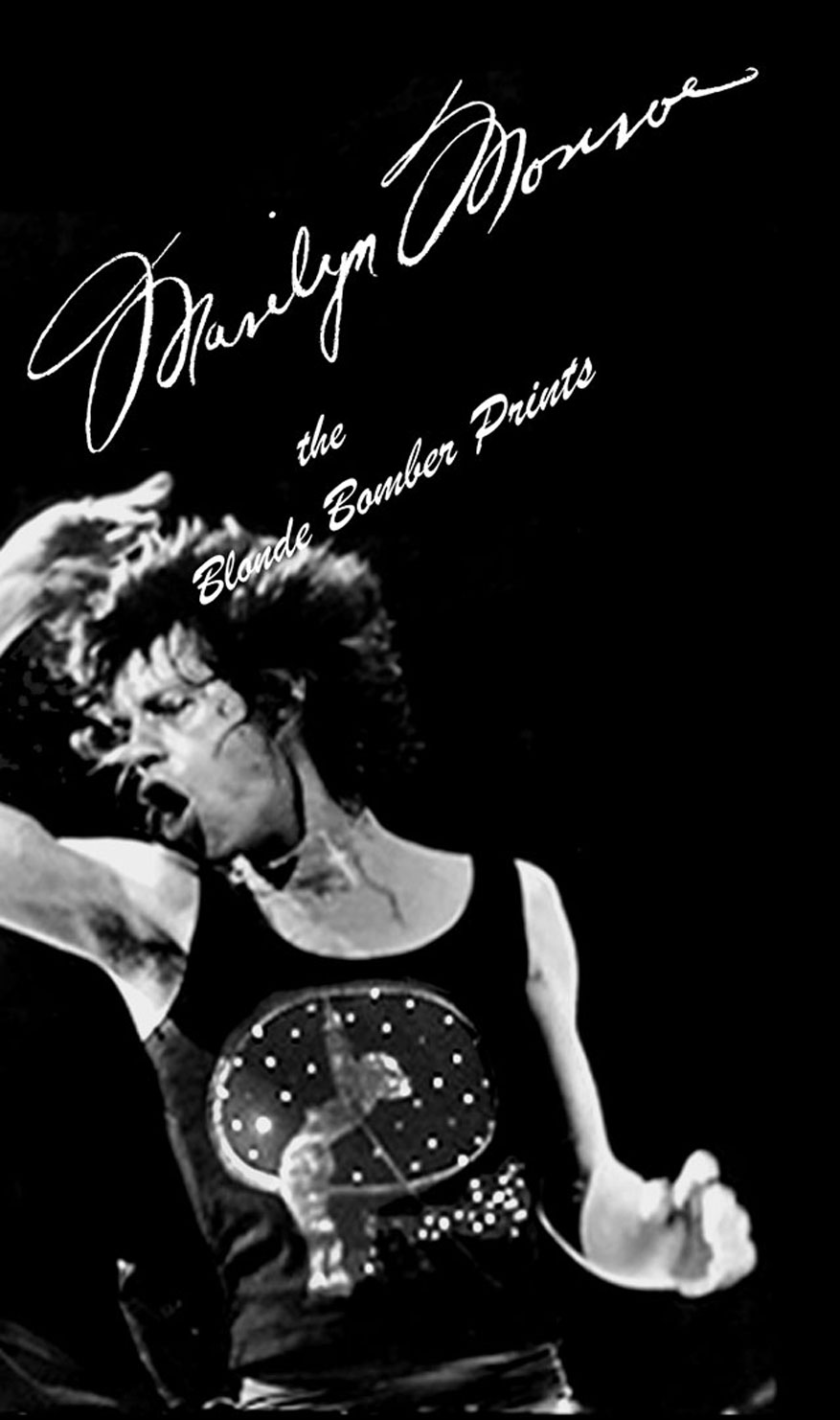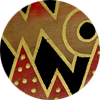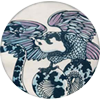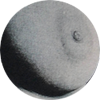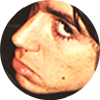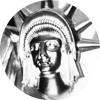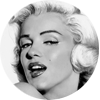Neil Pearson made this classic picture of Mick Jagger in Madison Square Garden on The Rolling Stones American tour in the summer of 1972. Ossie Clarke made his suits and Wonder Workshop made the T-shirts.

Jim Marshall photographed the Stones for Life Magazine July 14 1972. Here is Mick with his Marilyn T-shirt and dresser before the LA show.

We made the T-shirts in 1970 with a shiny black Cire for the very first prints but the fabric couldn’t hold the image so we moved onto the black cotton Jersey that Tommy Roberts had ordered for Mr Freedom but never used. Harri Peccinotti, the Nova magazine creator and famed Perrelli Calender photographer, always selected the most beautiful models for his shoots - we were fortunate to have our first black t-shirts photographed by Harri. The ‘Stupid Cupid’, ‘Rock’N’Roll Music’ and ‘Marilyn’ designs.

The MARILYN MONROE image was first used to make the Cut'n'Sew Jacket kit in the ‘Blonde Bomber’ series in 1968. The DIY kits were the second project where Molly and I joined up (the Painless Tattoos were the first). We made screens of the spread of patterns for an American style ‘Bomber’ jacket and printed images on the sleeves, front and back sections of the jackets - The designs: “Blonde Bomber No.1” (Marilyn), “Elvis”, “Strawberry”, “Blonde Bomber No.2” (Jayne Mansfield) Jackson Pollock and “Baked Beans”, “Silver Surfer” (a tribute to Jack Kirby). We began the Marilyn and Elvis in 1968 but we didn't make the surfer until 1972. (Blonde Bombers was the term given to the ‘Peroxide’ Blonde stars in Hollywood from the 1930’s onwards). Our idea was to produce a single piece of fabric so the various sections of the jacket could be cut from it and sewn together to create a ‘bomber’ style Jacket. We made single dynamic motifs for the backs of the Jackets and a composite ‘Blonde Bomber’ half-drop repeat fabric of autographed portraits for the sleeves with coloured striped flashing and waistband trim in contrast. Our 4 ‘Blonde Bombers’ were Marilyn Monroe, Jayne Mansfield, Marlene Deitrich and Diana Dors.

The Hollywood glossiness of the portraits was the dominant quality we looked for when selecting the images. I was making illustrations for several IPC magazines and newspapers in ‘68 and had built a good relationship with some of the Editors and Art Directors so was given access to the IPC picture library to source the photomontages - copyrights were held by Mirror Newspapers so they were offered free to us.

Sifting through hundreds of filing cabinets, we found great pictures of the ‘Blonde Bombers’ with that essential Tinseltown glossiness - we painted into the images to give them more parity as vignettes. But it was the painted lips, stars and signatures that held everything together.

This is the Golden Age of print. Unlike paintings or drawings, prints exist as multiple impressions and now the crossover of genres and new directions in Art and Design has lifted the horizons and extended the vision of the Artist. Slowly, the art establishment has reconciled these changes by being more adventurous with the way they operate the Museums and Galleries. Molly had used nineteenth century acid dye processes with her silks but we had researched the new chemistry coming through with the first screen print supply companies in London that specialised in inks for the commercial art industry - everything for paper, but very little for fabric. We had found a company in Northern Ireland, Polyprint, that had imported pigment textile dyes from the US. They were just the greatest dye stuffs - they intermixed with practically anything and were really fast and tough after a good baking. The new photographic emulsions were simple to use and we soon had the designs printed on the lengths of Cotton Satin we had purchased from Liberty’s Textile printing works - already prepared for print. This became our first Pop Art fabric. We only finished two of our ‘Blonde Bombers’ - Marilyn and Jayne.
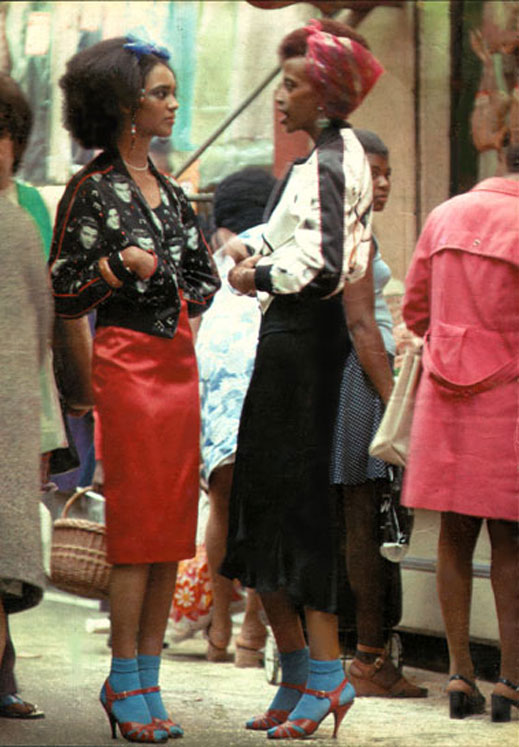
Armet Frances: picture of Brixton Market. 19 magazine - October 1972.

There's nothing in our archive for the Jayne piece except the artwork (the only existing printed Cut'n'Sew kit is owned by a New York’s Bloomingdales). There's plenty of documented pictures of our Marilyn T-shirt, Jacket and shirt but the most successful use of the Blonde Bomber print was on a western style shirt from a pattern made by Molly and Dinah Adams at Granny Takes A Trip in 1972. They adapted a 50's Roy Rodgers style cowboy shirt. - we gave our only existing sample to a guitarist with Hapdash And The Coloured Coat. The Ritz magazine pictures show a similar shirt with added white fringing.
We tried to launch the Cut’n’Sew kits through various channels including Libertys but eventually in April 1972 The Sunday Times offered to publish a Pop Art feature on our DIY Jacket Kits and run them as a Sunday Times special offer. It looked very promising and after a few quality control tests and wines’n’dines with Sales director, Roy Weaver, we landed a contract for 2,500 kits. We figured it would take us about six months to produce them all but they wanted them in 6 weeks! The kits were too complex to contract out to another printer and it would take 3 weeks before we could take delivery of the cloth. We had to leave that offer and the £10,000. There was so much going on at the time, everything was sharing the back seat. The phone was left off the hook while we were still trying to develop the new stuff in the workshop - divided between creating the new work, producing the designs in demand and making deals for the older pieces that hadn’t yet seen the light of day. The Satin Bomber Jackets eventually became popular through selected boutiques in London, New York, Los Angeles and Paris.

By the end of 1968, the London Scene was looking worn out - 60s culture was going mainstream and music was media driven. Large record companies like Virgin were about to dominate the Rock end of the recording industry and popular Fashion stores like Biba were about to dictate fashion, revisiting past styles and movements was on the horizon again. You knew that the Beat revolution (if it ever was a revolution) had pretty well ended and where American Pop Art had been absorbed and reinvented in the UK and Photo-realism was here to stay. In 1971 another group of rebels were beginning to emerge. A 50's Rock'n'Roll revival was already happening at Paradise Garage in London’s Kings Road and Garage punk rock had spread across the States to New York. Now ...... Walk on the Wild Side.
